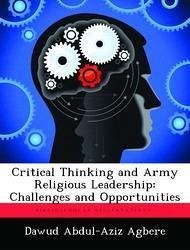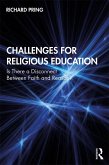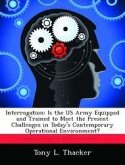The United States Army is changing and so must the chaplaincy. At the heart of the ongoing Army transformation is a critical thinking (CT) approach to problem solving and decision-making. Given the many complex choices Army leaders face on a daily basis, the Army considers CT to be an essential leader skill, and requires its leaders to become critical thinkers. Consequently, to remain relevant in a critical thinking Army, it is essential that chaplains need not only be educated on CT, but also that they understand what it portends for their religious leadership of the Army. Particularly as chaplains face new challenges and assume new responsibilities, some outside the area of their traditional expertise or training, CT skills will become even more crucial. Its shortcomings notwithstanding, CT is vital to Army religious leadership. However, to realize the value of CT to religious leadership in the pluralistic environment of the Army will require a broader understanding of religious ministry. Consequently, chaplains must overcome certain intellectual, theological, and psychological (emotional) challenges to foster coherent intellectual and theological alignment of their beliefs and ministerial practices. This study explores the relevance of CT to Army religious leadership by examining its meaning, characteristics, purpose, and requirements; outlining its strengths and weaknesses; and analyzing the challenges it poses, as well as its utility, for Army religious leadership.
Hinweis: Dieser Artikel kann nur an eine deutsche Lieferadresse ausgeliefert werden.
Hinweis: Dieser Artikel kann nur an eine deutsche Lieferadresse ausgeliefert werden.




![Challenges and Opportunities for the Obama Administration in Central Asia [Enlarged Edition] Challenges and Opportunities for the Obama Administration in Central Asia [Enlarged Edition]](https://bilder.buecher.de/produkte/41/41750/41750623m.jpg)



